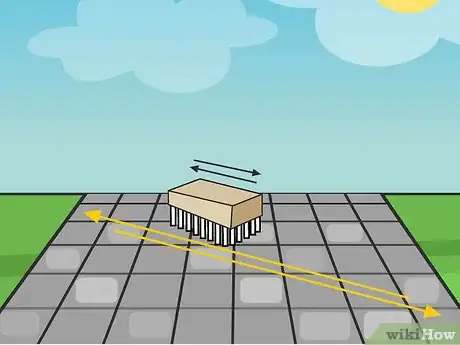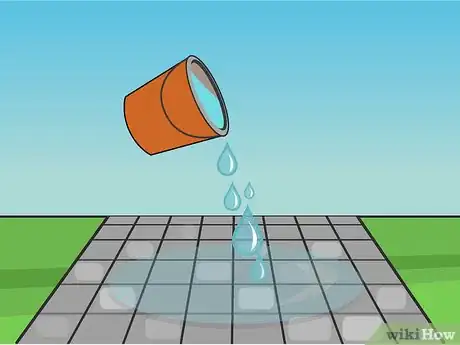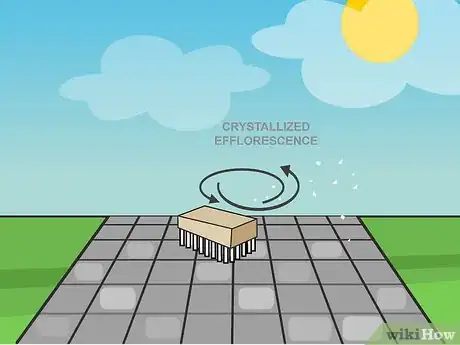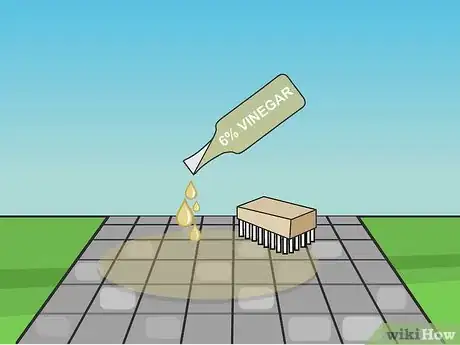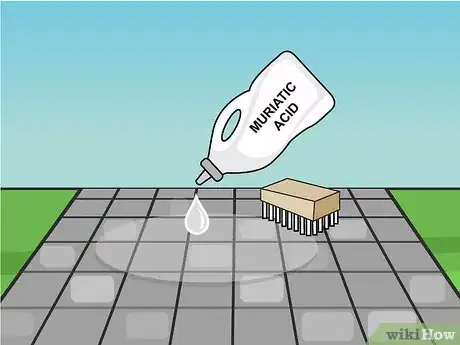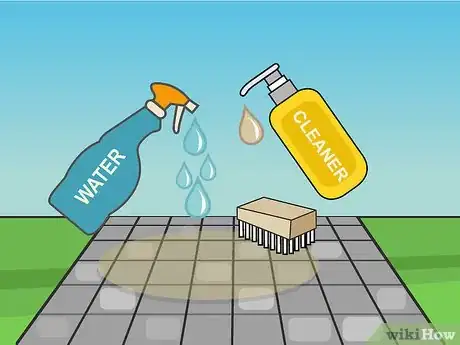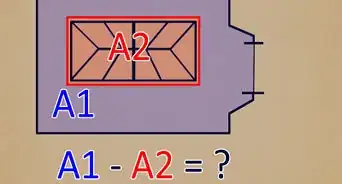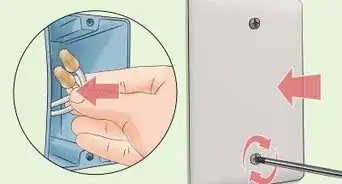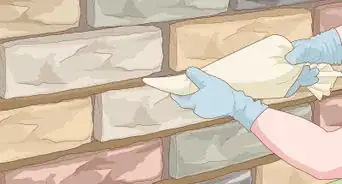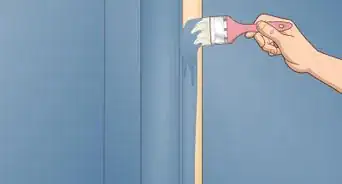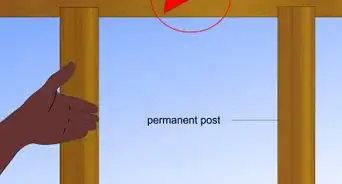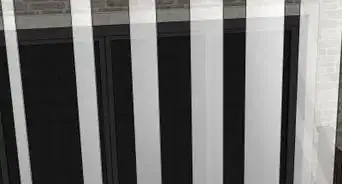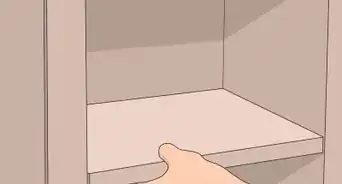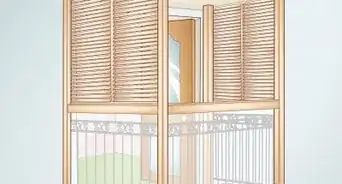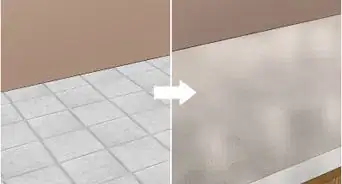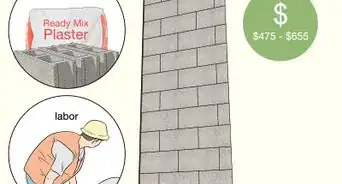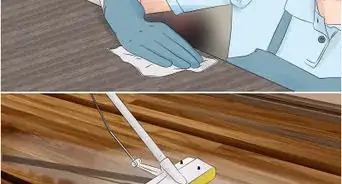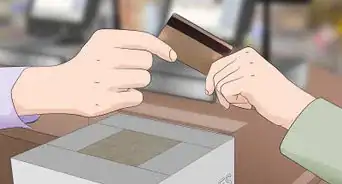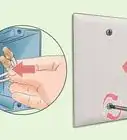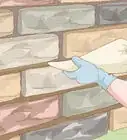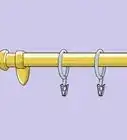This article was co-authored by Tony Hoang and by wikiHow staff writer, Amy Bobinger. Tony Hoang is a Landscaper and the Principal at H&J Landscaping & Concrete Contractor in Newark, CA. With over six years of experience, he specializes in designing the perfect concrete driveways & backyard patios for homes. H&J Landscaping & Concrete Contractor is a 4.5-star business on Yelp.
This article has been viewed 74,171 times.
Efflorescence is a white, powdery substance that appears on masonry, such as pavers, due to salt deposits that are present in the original brick. When the pavers get wet, these salt deposits gather on the surface, resulting in a dull appearance. Luckily, efflorescence can usually be removed from pavers by dry brushing, although you may need to apply a cleaner if the stains are really stubborn.
Steps
Removing Fresh Efflorescence
-
1Opt for dry brushing if you're dealing with early efflorescence. If you're just noticing the salt deposits building up on your pavers, you may be able to simply brush it away using a large push-broom or other stiff-handled brush. This method keeps the salts from being washed back into the pavers, so it should be the first thing you try.[1]
- If you leave the efflorescence in place, it will crystallize, making it harder to remove.
-
2Sweep the pavers from one end to the other. Focus especially on areas where the white deposits appear, but be sure to brush the entire surface of the pavers, since some of the deposits may not be built up enough to see. If you successfully remove all of the salt, you will reduce the chances that the efflorescence will return.
- It may take a little elbow grease to remove all of the visible white powder.
Advertisement -
3Rinse the area with water if brushing doesn't remove the minerals. If you're having trouble removing the efflorescence with just a brush, rinsing the pavers off with a hose could help loosen the salt. However, water shouldn't be your first choice, because you could rinse some of the salts back into the brick, which could result in the efflorescence returning.
- The water may flush out some of the original salts from the concrete, so you may have to repeat this process.
- If you need to, you can also pour water from a bucket onto the pavers.
-
4Continue treating the efflorescence as it appears. Efflorescence will not stop forming until all of the minerals in the concrete have been expelled. This means you may have to remove the efflorescence several times before it stops appearing.
Treating Crystallized Efflorescence
-
1Sweep the area to remove loose efflorescence. Even if you are dealing with stubborn, crystallized efflorescence, you should dry brush the area before you apply any chemicals. This will help ensure that you don't wash any of the salts back into the pores in your pavers.
-
2Rinse the pavers with 6% vinegar if dry brushing alone doesn't work. Vinegar is extremely effective against efflorescence, and you don't have to worry about rinsing dangerous acids into the soil around your pavers. Pour vinegar that is 6% acid over the pavers, scrub them with a brush, then rinse it away with a water hose.[2]
- Vinegar may not remove large buildups of efflorescence.
- Most common vinegar is 6% acidity.
-
3Try muriatic acid if vinegar doesn't work. If nothing else works to remove efflorescence from your pavers, mix together 1 part acid and 5 parts water, then scrub the acid into the pavers with a stiff brush. Be sure to rinse it off completely with a hose or water from a bucket, since muriatic acid is a dangerous chemical.[3]
- Wear rubber gloves and goggles to protect yourself while you're working with muriatic acid.
- When you're diluting muriatic acid, pour the acid into the water, not the water into the acid. This will help prevent the acid from splashing up and burning you.
- You can purchase muriatic acid at a home improvement store.
- For an even stronger solution, mix white vinegar, ammonia and muriatic acid and let it sit for a few minutes before rinsing.
-
4Use a minimal amount of cleaner and water. Leaving the cleaner on your pavers can cause erosion, especially if you're working with muriatic acid, so you'll need to rinse it away. However, using large amounts of water can wash the salts back into the pavers, so it's best to use as little of the cleaner as possible.
- By minimizing the cleaner you use, you will also reduce the amount of water needed to rinse it off of the pavers.
Things You'll Need
Dry Brushing
- Stiff bristled brush
- Water
Deeper Cleaning
- Vinegar
- Muriatic acid (if vinegar doesn't work)
- Safety goggles and rubber gloves (if using muriatic acid)
- Stiff-bristled brush
- Water (for rinsing cleaner)
Warnings
- Wear proper protective gear and use extreme caution when working with muriatic acid.⧼thumbs_response⧽
Expert Interview

Thanks for reading our article! If you'd like to learn more about pavers, check out our in-depth interview with Tony Hoang.
References
About This Article
If you need to remove efflorescence that has just appeared on your pavers, sweep across the surface of the pavers with a stiff-bristled broom or other brush. Be sure to brush the entire area to remove the buildup of the salts from your pavers. If that doesn't work, rinse the area with fresh water. However, this can wash the salt back into the pavers, so you may need to do this more than once. To learn how to remove crystallized efflorescence, keep reading.

